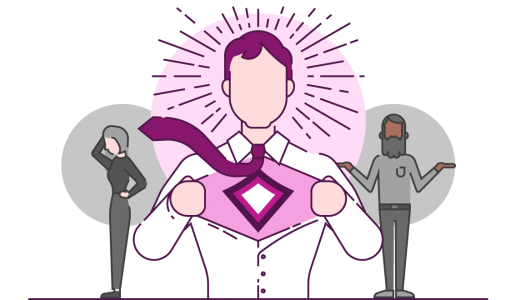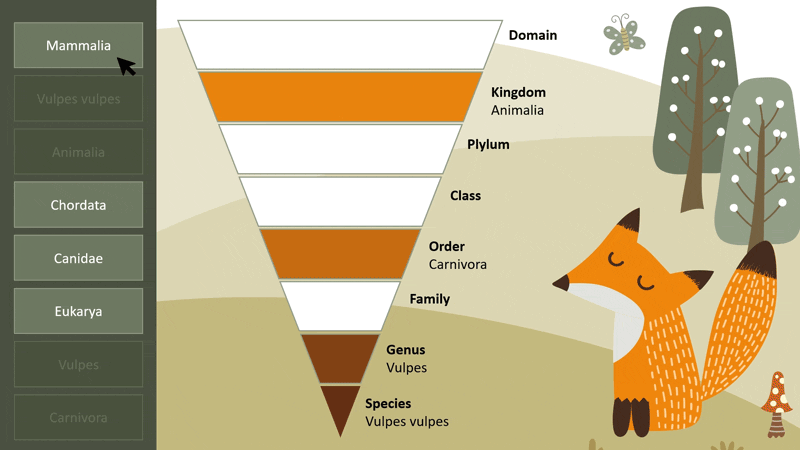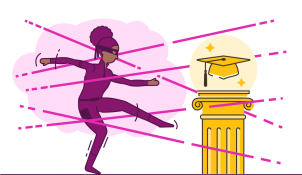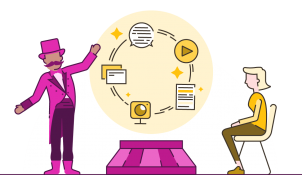Calling all eLearning aficionados! We’re back with a brand-spanking new blog post all about eLearning assessments. When we work with subject matter experts to develop multiple-choice questions we see the same mistakes again and again that make a big impact on the validity and reliability of assessments. But don’t despair, we’re going to show you how to fix them!
eLearning translation challenges and how to overcome them
- Written by: Lauren Goodfellow
- Categories: Effective eLearning

Today, more organizations than ever before are relying on eLearning to teach and train. And, from global companies educating employees, to Massive Open Online Courses (MOOCs) developed for an international audience, many eLearning courses now require translation to reach their learners.
Why you need a good eLearning translation partner
Anybody who has ever used Google Translate will know that particular method of translation can be a recipe for disaster. At best, amateur translations could lead to confused learners who don’t understand your content. At worst, a botched translation could cause unintended offense!
Even if the actual text translation of your eLearning is perfect, there are many other hurdles a project has to overcome. If you have a mismatch between your animations and your voiceover, or tiny squished up text and visuals that aren’t relevant to your whole audience, you’re unlikely to meet your learning objectives. So, it’s important that you work with an experienced eLearning translation partner to get the job done correctly.
The right partner will help to guide you through the eLearning creation and translation process. They will use their expertise to build the master version of the course in a way that means it can be easily translated, whilst still achieving all your learning objectives and keeping learners engaged.
How do we know? We’re an agency that creates eLearning for clients with learners all over the world. Learn more about what we do!
Challenge #1: Interactivity
The best eLearning courses keep learners captivated as they work through the content, which means that they often include interactive elements. Interactivity can really support learner engagement, but these elements are typically more complex than text or static content, making translating them more difficult.
Some forms of interactivity are built using multiple layers in Storyline. When a file is exported for translation, the context of each of these layers and how they fit together may be lost on the translator. This could lead to the interactive elements losing their desired meaning in the translated version.

The solution
An instructional designer that’s experienced in creating eLearning courses that require translation will be able to develop custom interactive elements. These will improve learner engagement whilst still maintaining their original meaning in a new language.
Challenge #2: Animation
The same sentence in two different languages can often have different timings. If you’re using voiceover in your eLearning, this means that any corresponding animations have to be adjusted to match. If you’re not fluent in a language, retiming animations to accurately match a translated script can be really difficult. However, well-timed animations can really enhance a learner’s comprehension of a topic, as well as keeping their attention, so making sure they’re in sync with the voiceover is important for hitting those learning objectives!
The solution
The right eLearning translation partner will be an expert at planning ahead. This includes things like timing animations in the master version to whole sentences, rather than individual words, so they can simply drop in the translated voiceover without having to learn a new language! Their forward thinking means that you can roll out your translated versions smoothly and quicker.
Challenge #3: Voiceover and scripts
Voiceover can be used to boost comprehension of and engagement in a topic, but many eLearning scripts include technical language – which may need specialists to translate – or colloquialisms and idioms – which can be hard to translate directly.
Working with voiceover artists is another challenge. It can be difficult for non-native speakers to understand how tone and tempo affect the meaning of speech, and your translated voiceover may come across very differently in style or mood to the master version.
The solution
A good eLearning translation partner will help you to write scripts that are easily translatable and unambiguous, making it easier for the voiceover artist to hit the mark. They will also be able to effectively liaise with voiceover artists to make sure that they convey the correct tone for your subject matter.
Challenge #4: Visuals
Engaging, meaningful visuals are essential to making effective eLearning, but if you’re using photos or graphics that include text elements they’ll also need to be translated. You can also create problems for yourself if you use visuals that are very specific to one audience. For example, a Spanish audience may not understand a reference to Greggs, even if your English audience love it! Manually replacing dozens of visuals throughout a course can dramatically increase the lead time on your eLearning translation projects, so it’s important to get it right from the start.
The solution
Skilled instructional designers will be able to carefully select visuals that convey your message and aid comprehension without making life difficult for a translator. They may offer specifically designed and on-brand illustrations that are relevant for an international audience as alternatives to text-laden photographs, helping to make your course look great in any language!
Challenge #5: Formatting
Translation can throw up a whole host of issues when it comes to design. Some languages in particular (I’m looking at you German!) have words that are much longer than their English counterparts, which can really eat up real-estate on your screen and mess up the most carefully constructed slide.

The solution
A skilled graphic designer will know how to leave space for these translated words to be used without ruining the layout – and will be able to quickly fix and formatting issues that appear. As with all of the other eLearning translation challenges we’ve covered, working with someone who is experienced in translation is crucial, as they know what potential problems could crop up.
What you can do to make your eLearning translation projects successful
Like any good partnership, eLearning translation takes work from both sides. One key thing is to decide on your translation and localisation goals at the beginning of the project. It’s important to let your partner know everything you need from the get-go, as adding in a new language or a new section of the course halfway through translation will only lead to delays and confusion!
It’s also crucial to get all stakeholders involved from the beginning. If the person with the final say isn’t involved at the earliest stages, it can lead to major problems down the line. Having everyone involved from the start means that everyone gets creative and technical input into the course before design, so the design stage of the project is smooth sailing!
An eLearning translation project can take a lot of time to get right: your partner agency should be up front with you about this. It’s important that neither you or the agency compromise on the quality of the master course, or any of the translated courses, to cut corners and speed up production. Setting realistic timelines for each stage of the project means that you can plan ahead and know that your deadlines will be met, rather than constantly having to move the goal posts.
By working together and communicating effectively, you can overcome the challenges of eLearning translation, and achieve your learning objectives. If you want to learn more about eLearning translation or chat to an expert about a project you have in mind – get in touch with us!
Leave a commentRelated articles
Employee training: Challenges for large organisations
Creating employee training for a large organisation can feel like playing whack-a-mole at the fair. Just when you’ve solved one need for one group, another springs up. Just when you’ve placated one stakeholder another appears out of the blue. You’re sweaty and stressed and it feels like the game will never end! Get it right and you’re rewarded with a big bag of candyfloss and the warm glow of knowing you’ve changed behaviour for the better. But getting there without help can be a real challenge.
How to run Virtual Instructor-Led Training
- Effective eLearning
- Comments: 1
Creating a great virtual training experience is about how well you use the physical and virtual tools at your disposal. Good virtual classroom learning requires clever design to focus your learners’ attention, create interactivity, and encourage discussion.
Join the BrightCarbon mailing list for monthly invites and resources
Tell me more!First of all the deck looks great, once again you guys have done an outstanding job. Second, I’d like to comment on the quality of the training provided by your colleagues - quite simply it was exceptional. I have spoken to the whole team and that view is unanimous. Please pass this on.
James Bagan MyLife Digital




